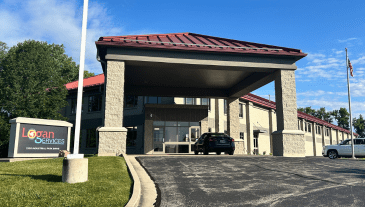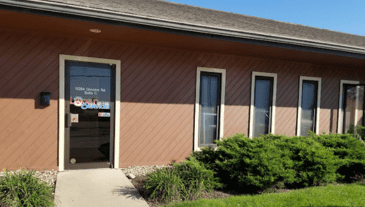As a homeowner, understanding the components of your furnace is central to maintaining a safe and comfortable living environment. The furnace flame sensor is one such component. Furnace flame sensors detect the flame in a furnace, and keeping a properly running flame sensor can improve the quality and lifespan of your system. The following sections will explore the makeup of your furnace, and how a bad flame sensor can influence the function of your HVAC system.
Understanding Your Furnace
A furnace is a central heating system that circulates heated air through the home using a network of ducts. HVAC systems typically use natural gas, propane, or electricity as a fuel source to generate heat. The furnace draws in cold air, heats it up using a burner and heat exchanger, and then distributes the warm air via a blower fan and ductwork.
Furnace Types
Furnaces come in several standard types, each with their own distinct features. All types of gas furnaces, including single-stage, two-stage, and modulating furnaces, use a flame sensor as a safety component. Regardless of furnace type, the flame sensor serves the same function: detecting the presence of a flame in the burner assembly and keeping the gas valve open when a flame is present.
- Single-stage furnaces: These furnaces operate at a fixed output, meaning they are either running at full capacity or completely off.
- Two-stage furnaces: These furnaces have two heat output settings, allowing for more precise temperature control and improved energy use.
- Modulating furnaces: These advanced furnaces can adjust their heat output in small increments, providing the most accurate temperature control and highest energy efficiency.
What Contributes to Furnace Lifespan?
The lifespan of a furnace is influenced by regular maintenance, usage, and installation quality. Scheduling annual tune-ups with an HVAC professional, insulating your home, and securing professional installation can extend the lifespan of your furnace and avoid premature flame sensor replacement.
- Regular maintenance: Schedule annual tune-ups and inspections to identify and address potential issues before they escalate.
- Usage: The more frequently your furnace runs, the faster its components will wear out. Proper insulation and thermostat settings can help reduce strain on your furnace and prevent the flame sensor from going bad.
- Installation quality: A properly sized furnace installed by a professional HVAC technician will typically last longer than an improperly installed one.
The Role of a Flame Sensor in Your Furnace
Understanding how the flame sensor functions and impacts your furnace’s lifespan will allow you to maintain a comfortable and secure home environment. It is important to have a baseline understanding of flame sensors in order to understand how a bad sensor can damage your HVAC system.
The Function of a Flame Sensor
The flame sensor is the safety device that detects the presence of a flame in your furnace’s burner assembly. When your furnace starts up, the flame sensor keeps the gas valve open only if a flame is present. If the flame sensor does not detect a flame, it will shut off the gas supply to prevent the buildup of unburned gas in your home. Unburned gas can accumulate to hazardous levels, creating a highly combustible atmosphere that, if ignited by a spark or flame, can cause an explosion or fire. Apart from these risks, exposure to unburned gas can cause health issues, including dizziness, nausea, and headaches.
How Flame Sensors Impact Furnace Lifespan
A malfunctioning flame sensor can lead to frequent short-cycling, which occurs when your furnace turns on and off repeatedly without completing a full heating cycle. Short-cycling puts excessive strain on your furnace system, leading to premature wear and tear and potentially shortening the lifespan of your furnace.
Signs You Need to Replace Your Flame Sensor
Several consistent signs indicate a sensor replacement may be necessary. When the sensor goes bad in a furnace system, the furnace as a whole may stop functioning. Inspect these issues immediately as they arise to prevent further damage to your system.
- Erratic furnace behavior: If your furnace exhibits erratic behavior, such as failing to ignite or struggling to maintain a consistent flame, it could be a sign that your flame sensor needs replacement. A faulty flame sensor may cause your furnace to lock out, requiring you to reset the system manually.
- Frequent system shutdowns: If your furnace shuts down frequently, even after resetting the system, it may indicate a problem with the flame sensor. When the flame sensor fails to detect a flame, it will trigger a safety shutdown to prevent the release of unburned gas.
Flame Sensor Replacement
While cleaning the flame sensor may resolve some issues, there are times when a flame sensor replacement is the best solution. To guarantee your furnace’s safety and proper functioning, it’s best to leave flame sensor replacement to a professional HVAC technician. A qualified HVAC technician will diagnose the issue with your system and determine if replacement is necessary.
Procedure for Replacing a Flame Sensor
Replacing a flame sensor is a task best left to a professional HVAC technician. The process involves the following steps:
- Turning off the power and gas supply to the furnace.
- Locating the flame sensor, which is typically on a mounting surface near the burner assembly.
- Disconnecting the electrical connection and removing the bad flame sensor.
- Installing the new flame sensor and reconnecting the electrical connection.
- Turning the power and gas supply back on and testing the furnace for proper operation.
Cleaning and Maintaining Flame Sensors
Regular cleaning and maintenance of your flame sensor can extend its lifespan and prevent the need for premature replacement. During annual furnace tune-ups, your HVAC technician will clean the flame sensor using a fine abrasive pad or steel wool to remove any dirt, dust, or corrosion buildup.
Understanding the role and importance of your furnace’s flame sensor is essential to maintaining your home heating system. By recognizing the signs of a faulty flame sensor and taking proactive steps to clean or replace this critical component, you can keep your furnace operating reliably and safely for years. Remember to schedule annual furnace tune-ups with a qualified HVAC technician to keep your furnace in top condition and catch potential issues before they lead to costly repairs or premature replacement.
The Logan Difference
At Logan A/C & Heat, we value integrity and customer satisfaction. We understand that a quality installation is the foundation of a reliable HVAC system, so we equip our installers with the necessary tools and skills to exceed customer expectations.
We believe that communication is key in every installation. Logan A/C & Heat installers follow a comprehensive checklist that our experienced install managers review and sign off, ensuring that every installation step is completed to the highest standards. Once the installation is complete, our team conducts a walkthrough with the customer, demonstrating how to troubleshoot their new HVAC system.
When you choose Logan A/C & Heat, you partner with a company that truly cares about your comfort, satisfaction, and well-being. Experience the Logan Difference for yourself and discover why we are the preferred choice for HVAC services in our community.
Frequently Asked Questions
Can I clean my furnace flame sensor myself?
While it is possible to clean your furnace flame sensor yourself, it is recommended to have a professional HVAC technician perform this task. Improper cleaning or handling of the flame sensor can lead to damage or incorrect installation, which may result in additional furnace malfunctions or safety hazards.
What happens if I don’t replace a faulty flame sensor?
Failing to replace a faulty flame sensor can lead to a host of issues that can compromise your furnace’s performance and safety. The frequent shutdowns caused by a malfunctioning sensor may result in inconsistent heating and increased energy bills. A faulty flame sensor can also pose potential safety hazards, and place strain on other furnace components, leading to premature wear and tear of the entire furnace.
Can a dirty flame sensor cause my furnace to shut off?
Yes, a dirty flame sensor can cause your furnace to shut off. When the flame sensor becomes covered in dirt, dust, or corrosion, it may fail to detect the presence of a flame, causing the furnace to shut down as a safety precaution. Regular cleaning of the flame sensor can help prevent this issue.




















